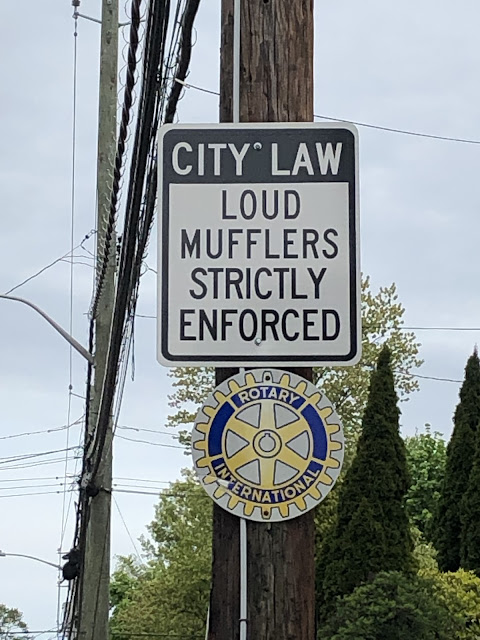Even after half a century as a dedicated cyclist, I still don’t understand what goes on in the minds of traffic and transit planners.
There are the bike lanes to nowhere that seem to begin out of nowhere—not to mention the ones that are ill-placed, -constructed and -maintained. Oh, and then there are lanes and turns that seem to be designed to put cyclists and pedestrians in the most possible danger.
Sometimes, though, I wonder whether those planners—those who enforce policies or the law—have any idea of what they’re trying to tell us or a working knowledge of the language in which they’re communicating.
In earlier posts I have given examples of signs that seem to contradict the intended message, or are simply confusing, because of poor logic, grammar or syntax—or seemingly-unintended oxymorons. To wit:
Now, perhaps I’m missing something but I don’t understand how something can be “loud” and a “muffler” at the same time. And even if such a thing could exist, how could it be “enforced,” strictly or otherwise? Is that sign warning people that if they enter New Rochelle without a “loud muffler,” they could be penalized? If so, what does the city deem an appropriate punishment for something that, by definition, cannot exist?
For the record, I cycled into New Rochelle without a loud muffler. I wonder whether there will be a peacekeeping force of violent pacifists stationed at the border the next time I enter the city from Eastchester.

Or Loud exhaust pipes not allowed.
ReplyDelete